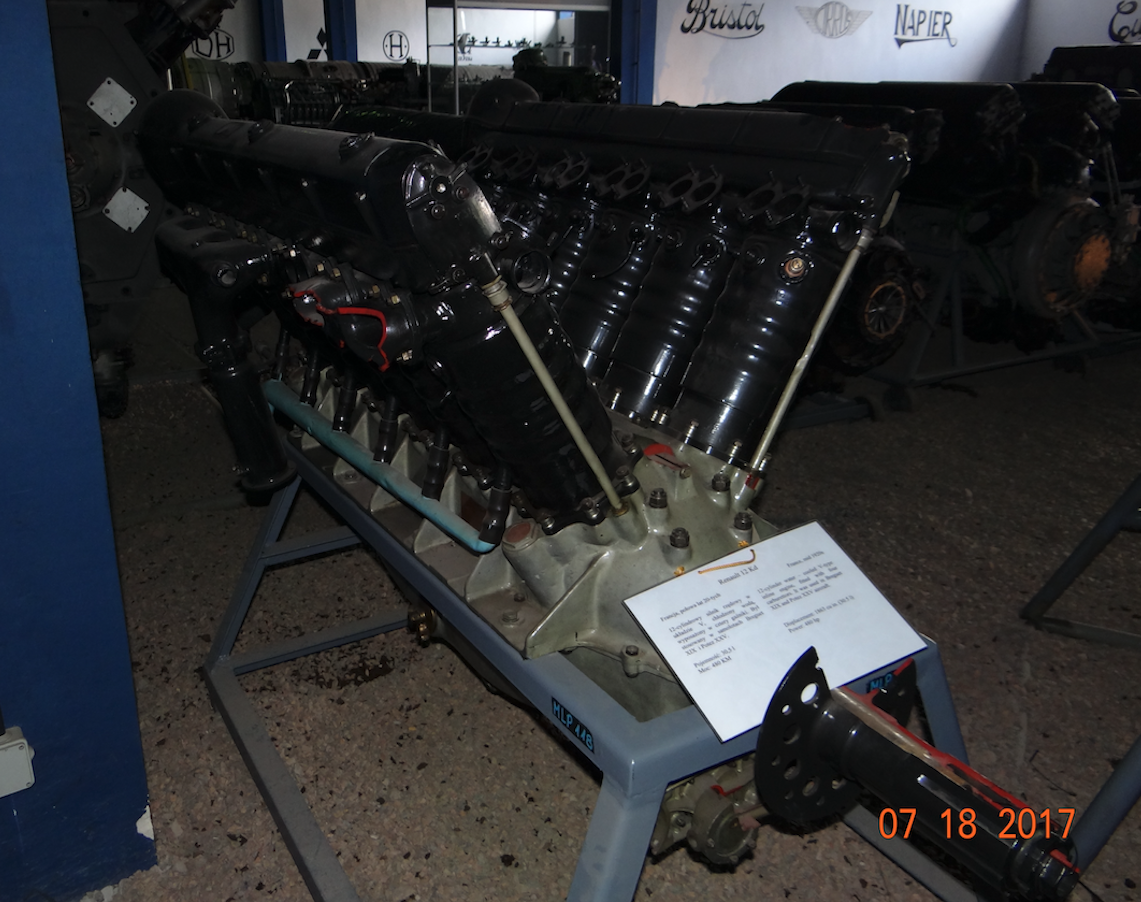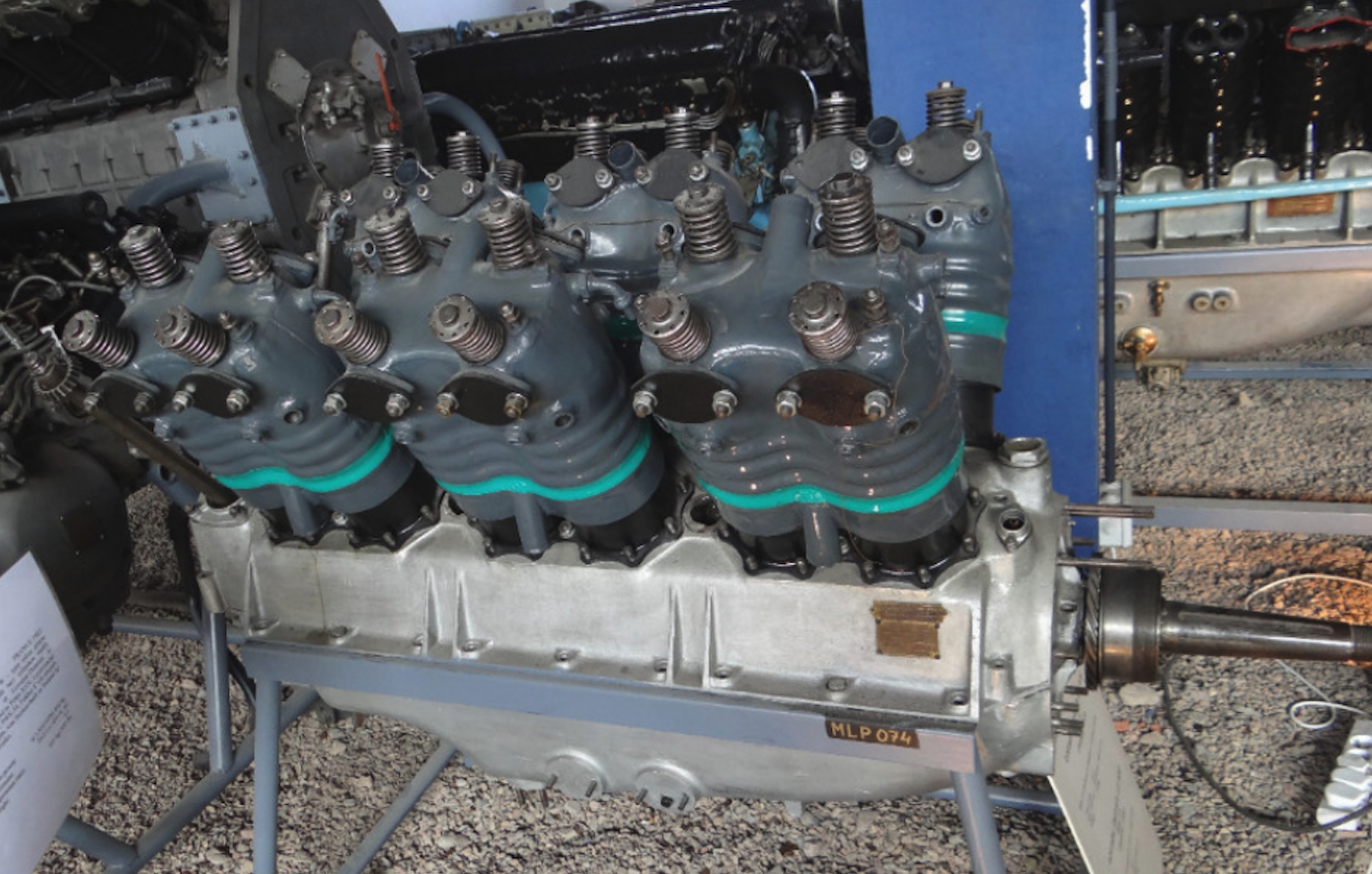History
The Breguet 19 is a French combat aircraft developed as the successor to the successful Breguet 14. Originally the name Breguet 19 was written in Roman numerals; Breguet XIX. The plane served as a light bomber and reconnaissance plane, as well as a rally plane. In Poland, the most famous flight is Warsaw-Tokyo-Warsaw.
The Breguet company planned to build a modern aircraft that was to be powered by two engines that would move one four-bladed propeller. Such a design was presented at the Paris Salon in 1921. But in effect the conventional system was chosen. Renault 12 Kb in-line engine with 450 HP was selected for the drive.

The Renault 12 Kb engine, with a capacity of 450 hp, was put into production in 1921. It is a water-cooled 12-cylinder V-type cylinder with four carburettors. It has a capacity of 30.5 liters. The development version is a Renault 12 Kd engine with 480 HP. The Renault 12 Kd engine was used in Breguet 19 and Potez XXV airplanes.
The Breguet 19 prototype with the Renault 12 Kb engine, 450 HP, was flew in March 1922. After factory tests, the plane passed state tests and was ordered by the French aviation. However, the first series of 11 Breguet 19 aircraft were used to test various French engines. With each engine used, with a power of approximately 450 HP, the Breguet 19 aircraft performed very well. Its top speed was 20-30 km / h faster than those of its competitors, and even faster than most fighter jets. In the end, Breguet 19 planes were produced with different engines.
The Breguet 19 was distinguished by a metal structure made of duralumin and a small amount of wood (ribs in the wings). These French solutions were later used by Polish constructors for Polish constructions. The Breguet 19 aircraft met with wide interest in the world, multiplied by its sporting successes.
Mass serial production of Breguet 19 aircraft was undertaken in France in 1924, for French aviation and for export. The aircraft was produced in the basic versions: the Breguet 19 A2 reconnaissance and the Breguet 19 B2 light bomber, differing only slightly from each other. Both versions of Breguet 19 could be equipped with different engines, depending on the customer's requirements. The most common were Renault 12Kb inline engines with 450hp. It is a 30.5 liter, water-cooled, 12-cylinder V inline engine. The engine has four carburetors. A Renault 12Kd engine with 480 hp was also used.
A Lorraine Dietrich 12 Db engine (LD 400, Type 13) was also used, producing 415 hp at 1,800 rpm. The engine is a 12-cylinder, "V" type, with a capacity of 23.7 liters. The engine is liquid-cooled. The engine weight is 370 kg.

A Lorraine-Dietrich 12 Eb engine with 450 hp was also used. It is an engine produced at the Lorraine-Dietrich plant in Argenteuil. The engine was manufactured in Poland under license at Polskie Zakłady Skody. It is a 12-cylinder "W" engine, two cylinders in six blocks. Maximum power was 450 hp at 1,850 revolutions per minute. The capacity is 24.4 liters. Compression ratio 6.1: 1. The engine weight is 435 kg.

At the end of 20 years, Breguet 19 aircraft were already equipped with engines with a power of 500-600 HP.
Despite the classic biplane and fixed chassis layout, the Breguet 19 was ahead of its time. Constructed of metal (duralumin), the plane turned out to be very durable and durable. The undercarriage is fixed, but it is now a single-leg. Therefore, rally versions were also built, intended for long flights. Large fuel tanks were built in the airframe.
Breguet 19 were also created in the postal (cargo), passenger and training versions. Overall, more than 2,000 Breguet 19 aircraft were built in France and around 700 were built under license in Spain, Belgium and Yugoslavia.
Breguet 19 in Poland.
In the period 1925-1930, Polish Military Aviation purchased 250 planes: Breguet 19 A2 (reconnaissance) and Breguet 19 B2 (bomber), with Lorraine-Dietrich 12 Eb engines, with a capacity of 450 HP. 19 Breguet planes were withdrawn from combat squadrons in 1932-1937. In school squadrons, planes were used until 1939. Most of the Breguet 19 planes were destroyed during the German army's attack on Poland in September 1939.
On a modified military plane Breguet 19 A2, with an additional fuel tank, from August 27, 1926 to September 25, 1926, lieutenant pilot Bolesław Orliński and mechanic sergeant Leon Kubiak made a flight from Warsaw to Tokyo, on a route of 10,300 km and from back. On the way back, the pilots had problems with the engine oil installation. Also, while on the ground, the plane thrown by the wind was damaged. The lower wing and the propeller were damaged. Nevertheless, after makeshift repairs, the pilots managed to return to Warsaw. Initially, the rally was to be carried out with a Potez XXV plane with a Renault engine, 480 HP, in the "V" configuration. However, the engine was underdeveloped and on its way from France to Poland, the plane crashed twice. The second landing seriously damaged the machine. However, Polish airmen did not give up their flight to Tokyo. In men, the flight was to be performed by Ludomił Rayski, but due to his professional duties, he appointed lieutenant pilot Bolesław Orliński for the flight. A Breguet 19 A2 plane, on which Ludomił Rayski had previously made great flights, was taken for the rally.
Construction
Breguet 19 is a single-engine strut biplane with a metal truss structure, covered with a duralumin sheet in the front and middle part of the aircraft fuselage. The canvas covers the rear part of the fuselage, wings and tail.
The wings are wooden and metal covered with canvas. The lower lobe has a smaller area and span. The upper lobe is placed above the fuselage on two stand-ups. There is only one pair of stanchions between the upper and lower lobe. The ailerons are only placed on the upper lobe.
The hull is metal and aerodynamically shaped. The two-blade propeller has a large cap. The engine mass is very aerodynamic and has two or three bulges on the top, depending on the "V" or "W" in-line engine used. The engine is liquid-cooled. A large fuel tank is located behind the engine. The open cabins are two-seater in a tandem arrangement. In later versions of the plane, the cabins could be covered with a limousine.
The tail of the plane is classic. The landing gear of the aircraft is fixed single-leg and is completed with a tail skid. In rally versions, the wheels could have fairings.
Armament.
The armament consisted of three machine guns: one synchronized 7.7 mm Vickers machine gun and two 7.7 mm observer Lewis machine guns on a turntable. The bomber version of the plane took up to 472 kg of bombs. The bombs were placed on the ejectors under the wings or in the bomb bay (up to 120 kg).
Data T-T Breguet 19:
Span 14.84 m. Length 9.51 m. Height 3.39 m. Bearing area 34.7 m2. Curb weight 1 380 kg. Gross weight is 2,200 - 2,500 kg. Top speed 220-245 km / h. Service ceiling 6 700 m.
Tally
In the period 1925-1930, Polish Military Aviation purchased 250 planes: Breguet 19 A2 (reconnaissance) and Breguet 19 B2 (bomber), with Lorraine-Dietrich 12 Eb engines, with a capacity of 450 HP.
Written by Karol Placha Hetman
